The Gift of South Dakota
Subscriptions to South Dakota Magazine make great gifts!
Subscribe today — 1 year (6 issues) is just $29!
Can We Save The Big Sioux?
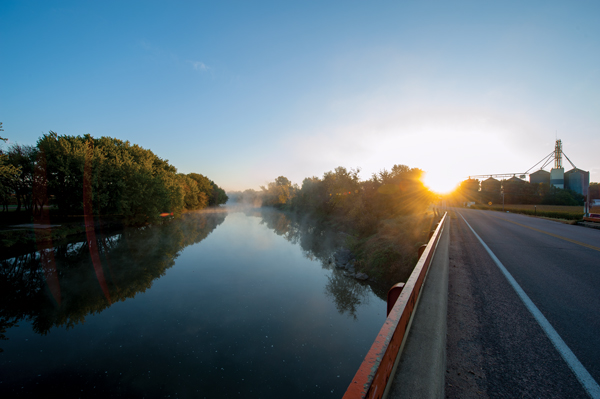 |
| There's beauty all along the 420-mile Big Sioux River, but it is consistently among the most imperiled rivers in the country. Photo by Greg Latza. |
YOU NEED NOT talk long with Morris Kirkegaard to understand his passion for the Big Sioux River. He and his wife, Diane, have operated the River of the Double Bend Campground and Canoe Outfitters along the river in the small Moody County town of Trent for a dozen years. But Kirkegaard has spent much of his 64 years a stone’s throw away from the Big Sioux. “In high school my friends and I spent days on the river,” he recalls. “We made a boat every summer. Then we’d forget about it during the winter and lose it in the spring flood. For me, it was the perfect place to grow up. And I want my grandson to experience some of that.”
He and his grandson share a passion for collecting fossils. Last summer, they excavated the bones of a giant ancient lizard from the Big Sioux’s muddy banks. The temperatures were below zero when we spoke in January, but there was pride in his voice when he said, “It’s winter now, so it’s very clear. You can see straight down to the bottom.”
Then, his voice trailing, he added, “But it turns like chocolate milk every spring.”
That’s a far cry from the upbeat entry that Frenchman Joseph Nicollet, exploring for the U.S. government, recorded when he first laid eyes upon the Big Sioux in July 1838. Modern-day river rats might scoff at Nicollet’s summertime description of a “stream of clear, swift-running water meandering across an immense prairie whose vegetation is better supplied and more varied and where the land seems disposed to provide all the agricultural needs for a civilized society.” Nicollet clearly observed the river’s pebbly bottom, and abundant fresh-water clams and mollusks. If any clams clung to the bottom today, they would be obscured by murky brown water or perhaps dislodged by the scrap iron that volunteers regularly fish out of the river.
Nearly 200 years of settling the Great Plains has changed the Big Sioux from the picturesque brook of Nicollet’s day into a river that advocacy group Environment America declared the 13th dirtiest river in America in 2012. But there are armies of South Dakotans who live along the Big Sioux, who use it for recreation, or who simply want to make it cleaner for their grandchildren, that are trying to fix it. The biggest question they face is whether or not their efforts are in vain. If they are, it may be time for South Dakotans to re-evaluate the ways they use the river.
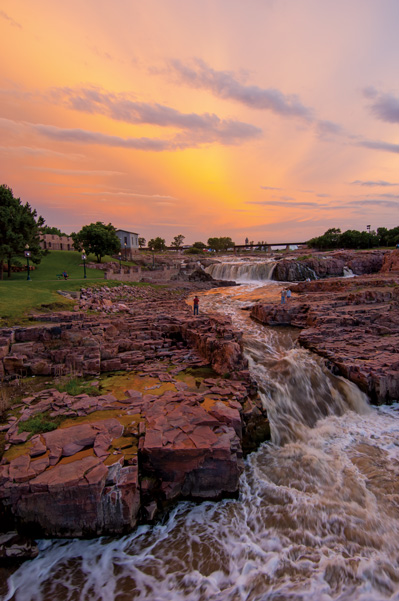 |
| South Dakota's largest city rose around the falls of the Big Sioux River, which first attracted town-builders in the 1850s. Photo by Greg Latza. |
The Big Sioux River begins at a pond in Roberts County, about a mile and a half north of Summit, and flows 419 miles south, through nine counties, emptying into the Missouri River at Sioux City. The river snakes through three of our five largest cities — Watertown, Brookings and Sioux Falls — making it the most heavily populated river basin in South Dakota. But most of the 5,382 square miles it drains in South Dakota, plus another 3,000 in Iowa, is agricultural land. The state Department of Environment and Natural Resources, in its biannual water quality reports, says the primary pollutants in the Big Sioux are agricultural runoff — waste from livestock grazing too closely to the river and herbicides and pesticides that trickle across the rolling East River farmland directly into the river —wildlife and wet weather discharges from small towns.
“The river we have today is a reflection of how we use the land in eastern South Dakota,” says Jay Gilbertson, manager of the East Dakota Water Development District headquartered in Brookings. “We live in an agricultural state. Sioux Falls is there, but the rest of South Dakota, and huge parts of the Big Sioux river basin, are farm ground, ranches and pasture.”
Agriculture as we know it did not exist in the Upper Plains when European explorers first established contact with the Big Sioux over 300 years ago. A map published in Paris in 1701 is one of the earliest documents to mention the Big Sioux. It shows a fur trader’s trail from the falls of the Big Sioux River to Prairie du Chien on the Mississippi River. The area was a rendezvous for Indians and French fur traders. Jean Baptiste Trudeau passed the river’s mouth in 1794 before building Pawnee House, the first trading post on the Upper Missouri, near modern day Fort Randall. Nicollet first encountered the river a few miles west of present day Brookings late on the afternoon of July 7, 1838 and followed it to its source, noting the clarity of lakes Oakwood, John, Albert and Poinsett.
The Homestead Act of 1862 brought thousands of settlers to Dakota. Through the early 1900s, they introduced domestic livestock to roam the once wild prairie and transformed other sections into a patchwork of row crops. As farming operations grew, Gilbertson says government offices and colleges encouraged farmers to build feedlots on hillsides so that spring rains would wash waste downstream to a destination out-of-sight and out-of-mind. Citizens in new towns along the river shared that mentality for their own sewage. “The assumption was that there was always going to be enough water,” Gilbertson says. “At some point, there’s no longer enough fresh water in the river to dilute the effluent that is going into it. I think people were concerned, but it wasn’t at the top of the list.”
Then the environmental movement gained traction in the 1950s, and people paid closer attention to the health of their waterways. In 1972 Congress passed the Clean Water Act, which sought to control pollution in the nation’s rivers and streams. To comply with its provisions the Big Sioux is divided into 17 segments, each with a set of prescribed uses. Pollutant levels are monitored in each section, and the state compiles a biannual report to determine the river’s compliancy with federal requirements in each segment.
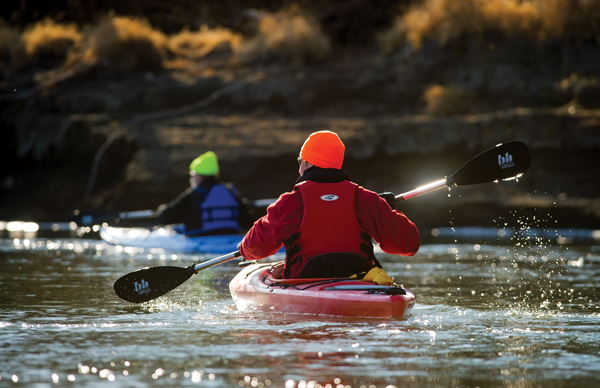 |
| Paddlers encounter farmland, wooded areas and rugged red quartzite canyons. Photo by Greg Latza. |
The river above Sioux Falls received good marks in the 2012 report. Only two stretches — one near Lake Kampeska and another between Willow Creek and Stray Horse Creek in Codington and Hamlin counties — exceeded the maximum levels of E. coli and fecal coliform allowed under federal standards. But the river from Sioux Falls to Sioux City contains such high levels of E. coli, fecal coliform and total suspended solids that portions aren’t safe for fish or limited human contact, and swimming is prohibited along the entire route. The outlook is not sunny. “I have not seen anything in our ability to affect the kind of change that will be necessary to get within that total immersion standard,” Gilbertson says.
South Dakota is chiefly an agricultural state, but farmers should not be viewed as the lone villains behind the Big Sioux’s plight. “No one of us is responsible for a big problem, but collectively we bear the burden,” Gilbertson says. “We would all like to see a riparian corridor along the river.”
Lisa Richardson, executive director of the South Dakota Corn Growers Association, argues that farmers depend upon clean water perhaps more than anyone because it directly affects their livelihood. She says technological advances like variable rate technology, which uses satellites to map cropland, allows farmers to apply fertilizer and other chemicals more conservatively. The association had planned to hire a water quality consultant in 2012, but the prolonged drought negatively affected the organization’s budget, which relies on yields, “Water quality and water management affects every farmer out there, so we’ll continue to emphasize that,” Richardson says.
And then there’s Sioux Falls, South Dakota’s largest city, with 160,000 people. The city has had a turbulent relationship with its namesake river since being founded in 1856. Homesteaders were drawn to its signature falls, where every second 7,400 gallons of water gush down 100 feet of Sioux quartzite thought to be billions of years old. City founder Richard Pettigrew sought to harness that immense power in a flourmill, the remnants of which can still be seen at Falls Park. He also led a group of investors who established a stockyard and meat packing plant that became one of the first industrial polluters of the river when they dumped its waste directly into the water.
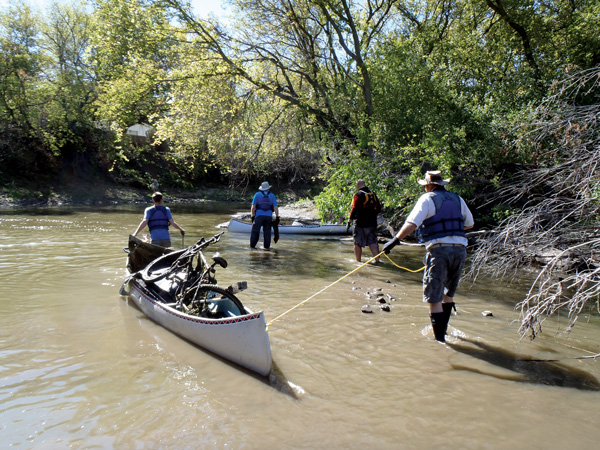 |
| Members of the South Dakota Canoe and Kayak Association focus their summertime cleanups on the Big Sioux River. |
According to Gary Olson’s history of Sioux Falls, by 1920 businesses and many homes were connected to city sewer lines that fed waste into the Big Sioux. In especially dry summers, the amount of sewage from residences, business and the John Morrell meatpacking plant, which opened in 1909, equaled or exceeded the amount of water available to carry it away.
The city addressed that problem by building a sewage treatment plant in 1927. Still, when researchers collected river samples in 1972 for a national study, they found bacteria levels thousands of times greater than acceptable standards. The treatment plant and Morrell’s shouldered the blame.
Sioux Falls has made strides to embrace the river through its River Greenway Project in the 1970s and more recent improvements around Falls Park. But in 2010 the city was forced to dump 65 million gallons of raw and partially treated sewage into the river when heavy spring rains overwhelmed the sewer systems. And in 2011 Morrell’s was cited for three years of waste discharge violations. The city paid $10,877 in fines, and has spent millions since on sewer system upgrades. Morrell’s paid $44,079.
The Big Sioux’s pollution problems have been well known for decades, particularly to members of the South Dakota Canoe and Kayak Association. The club began in Sioux Falls in the late 1980s, but canoeists favored regular trips to West River waterways over the river running through their own territory. “It was considered a mess,” says Jarett Bies, the association’s president. “Part of the reason they went to the Cheyenne or the Grand was because it was cleaner, and there wasn’t as much agricultural runoff.”
The diminished water quality does not preclude club members today from cruising any portions of the Big Sioux, but they do take precautions. “If it’s a hot day, we don’t stop at some point and have everyone take a swim,” Bies says. “That’s something fun you can do on the Missouri River, but that’s part of the knowledge base among locals. You can use it for recreation, but I don’t think they would swim in it.”
Rather than avoid the problems, members host regular cleanups in the Big Sioux. They’ve discovered that the water is not just dirty chemically. It’s also full of garbage. Men and women walk portions of the river, pulling debris-filled canoes in their wake. “Last fall when we were working on Skunk Creek (a tributary that flows through Sioux Falls), we fished out bicycles, old air conditioners, tires, lots of metal debris,” Bies says.
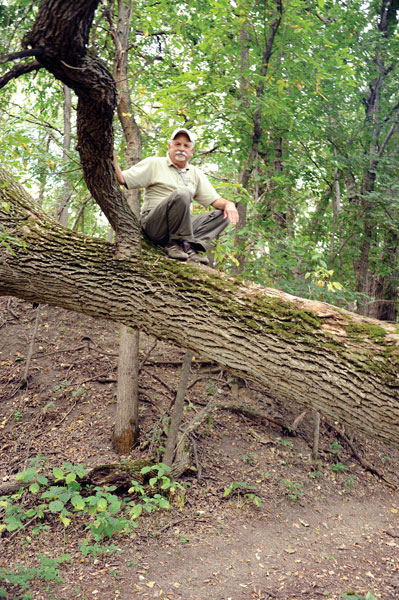 |
| The Big Sioux flows through Good Earth State Park at Blood Run, where naturalist Ed Raventon leads tours. |
So what’s the solution behind this decades-old problem? Millions of dollars have been spent on upgrades to water treatment facilities and waste management systems to little avail. Some might wonder if it’s worth the effort since we’ll never have the same river Nicollet found in 1838. “If your standard is pristine waters, you’re never going to get there,” Gilbertson says. “Things that we are doing now that we expect to do on a regular basis would have to stop. That kind of an expectation isn’t terribly realistic. We need to find a balance between making use of the land in ways that we feel is appropriate while minimizing the adverse impacts on other things that we would prefer to preserve.”
Gilbertson and other clean water advocates may have discovered a way to do just that. About 10 years ago, the East Dakota Water Development District was monitoring samples from a portion of Bachelor Creek, a tributary of the Big Sioux near Trent in Moody County. Results were mixed for years, but oddly the samples began improving. They discovered the farmer who owned pasture on both sides of the creek had enrolled the land in the Conservation Reserve Program. “Just taking a half-mile of riverbank out of constant use as a pasture led to a pretty dramatic change,” Gilbertson says. “It’s a small stream, but it can happen.”
That led to joint program between East Dakota and the Northern Prairies Land Trust to create buffer zones by enrolling land within 150 feet of the river in 30-year or perpetual easements, removing it from production. Jerry Kiihl was among the first farmers to enroll. He placed 36.5 riverfront acres about a mile south of Castlewood in a permanent easement in December 2007, and now has 75 acres protected. “The quality of the river has improved greatly,” Kiihl says. “This was a good way to protect the river environment forever. Some of the banks had eroded over time. They’ve moved 20 to 25 feet further in than they were 30 years ago.
The native grasses have started to come back. You see more big bluestem. And the grass has helped wildlife habitat. There are more ducks and pheasants.”
Kiihl has become an advocate for easements, and has helped convince several of his Hamlin County neighbors to participate. Jim Madsen, of the Northern Prairies Land Trust’s Watertown office, says 625 riverside acres are protected through easements. “We know we’re making an impact,” Madsen says. “Just how much is hard to say. Honestly, we need to create a buffer up and down the entire Big Sioux River. It’s possible, but so much depends on whether or not the funding is there.”
That’s music to the ears of river advocates like Morris Kirkegaard and Jay Gilbertson. “You can do almost anything on the other side of that buffer, and short of a major catastrophe very little of what happens is going to get into the river,” Gilbertson says.
Kirkegaard has already placed 20 acres of farmland he owns near Trent into an easement program and hopes to have 80 total acres enrolled by the end of 2013. If results further upriver hold true, swimmers might find themselves once again splashing in the Big Sioux’s southern reaches. A cleaner river would benefit the farmers living along it, kayakers who cruise it, and grandfathers and grandsons who hunt its banks for ancient sea creatures.
Editor’s Note: This story is revised from the March/April 2013 issue of South Dakota Magazine. To order a copy or to subscribe, call (800) 456-5117.







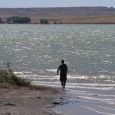


Comments
Always proud of what South Dakotans do!
Terry Church